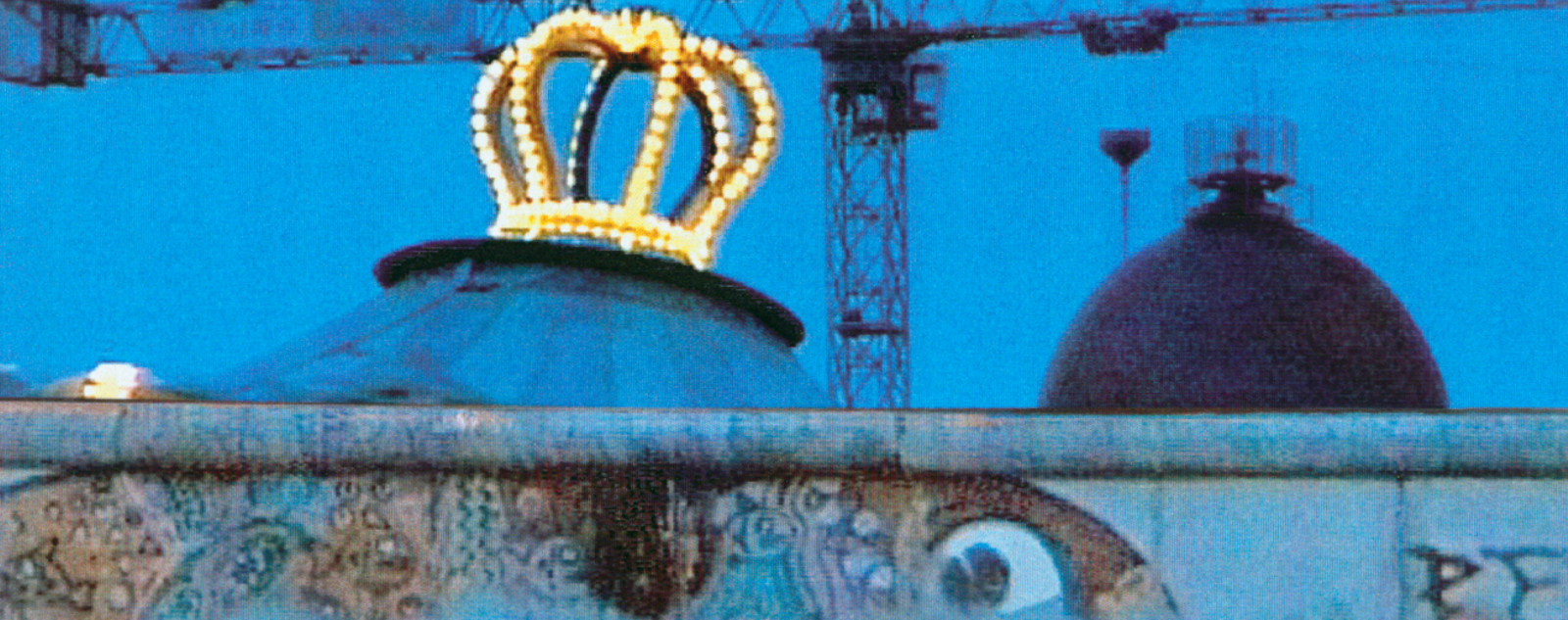AFTER THE FALL

November 9, 1999. Ten years after the Fall of the Berlin Wall and virtually nothing of the concrete structure has been left. Another collective act of “forgetting”. With 50,000 new buildings already completed, Berlin is ready once again to make a play to be the economic and political capital of a united Europe. With a massive tunnel system for the new 400 km p. h. trains linking East with West, corporate high rises and the new capitol buildings all being built simultaneously, the deathstrip is now Europe’s largest contruction site.
The Wall is gone but not the conflict. Two thirds of the East Germans feel as strangers in their own country. Like archeologists from another century, we search for the Wall’s traces and along the way ask those who lived up against it: what were their experiences, frustrations, fears, dreams – and what are their concerns now? Long used as a propaganda tool on both sides, the human side of the Wall has never been dwelt upon. It’s a story that already sounds to Berlin’s own children like an ancient myth or parable. It’s not to be understood through logic or historical research. The Wall gave people’s daily life an absurd dimension. It’s current disappearance: Kafka.
Traditional documentaries about the Berlin Wall have centered on political intrigue, Kennedy vs. Khrushchev, great escapes or the act of its opening. “After the Fall” has a narrative structure: The focus is on personal experience. The camera, always in the present, investigates the remains of a border: the deathstrip, the fate of the banished concrete and, concurrently, the psychological scars and stories of those who lived up against the structure. The narrative is pulled together by peoples’ stories: A Bavarian salesman and accordion player who recycled the Wall now sells Wall sections with new graffiti. A psychotherapist with a backload of patients who are too frightened to even cross into the West is searching for the deeper reasons of the German trauma. A Reverend, whose own church on the deathstrip was blown up, saves the only section of intact Wall now in Berlin. A Stasi Captain, who drew the white line in front of US-tanks, now plays himself on a set with a styrofoam “Wall” in a feature film. An American historian investigates along the deathstrip for the Wall’s physical and metaphorical connection to the new capital’s haunted past. English homeopaths prescribe pulverized Berlin Wall for depression, oppression and split personality.
The lyrical visual style is critical to the film. The intent is to have the audience ask, what would Manhattan be now, had it been arbitrarily split down Broadway and one side surrounded for a generation by a Wall? Or London?
Directed by Eric Black & Frauke Sandig, Camera: Eric Black, Editor: Inge Schneider, Production Manager: Brigit Mulders, Production: Umbrella Films, Frauke Sandig, Length: 84 min. (56 min. version for television), Format: DV/DigiBeta, 35-mm-print available. Copyright Eric Black & Frauke Sandig Umbrella Films, 2000.
